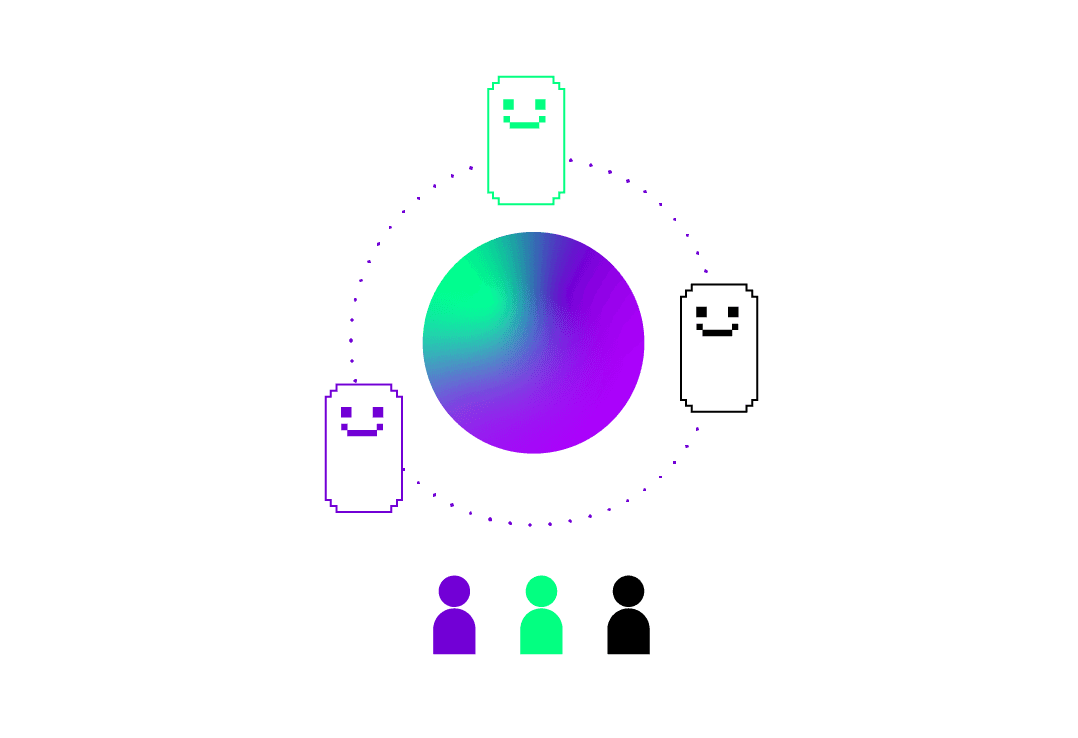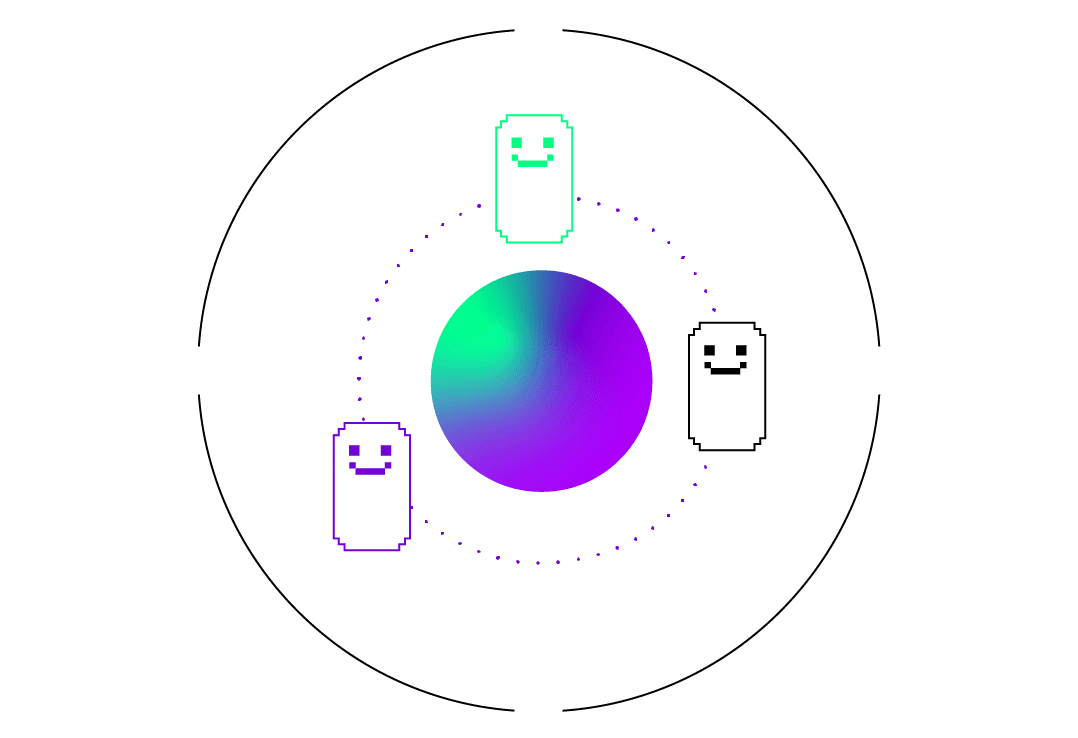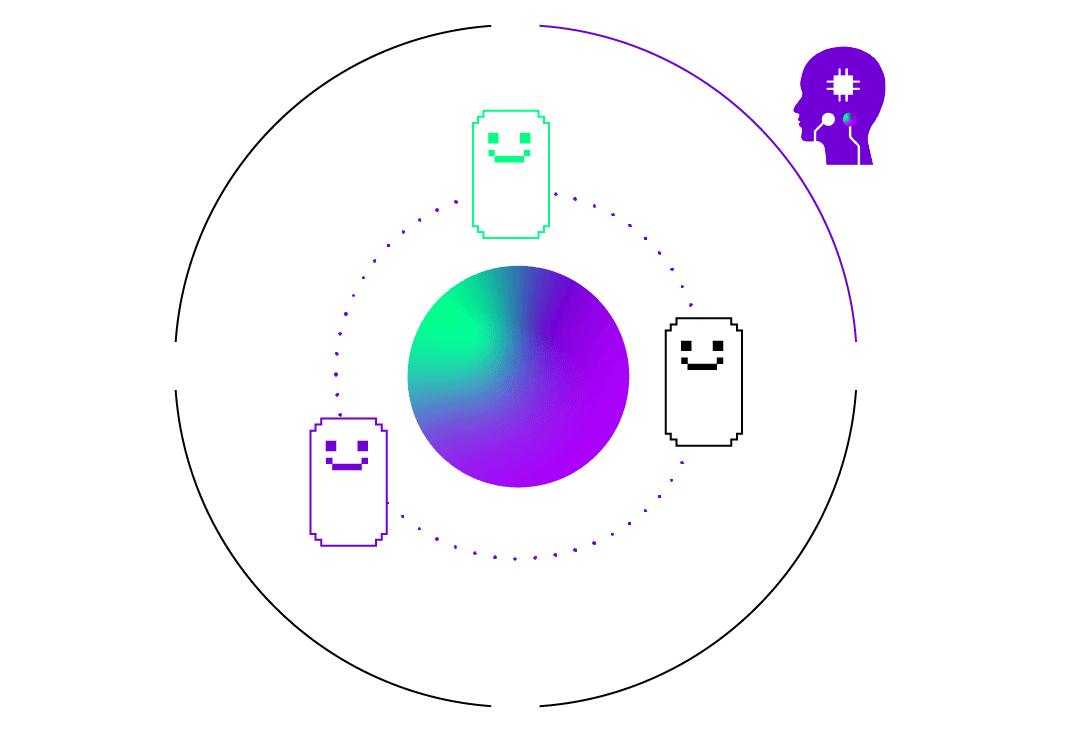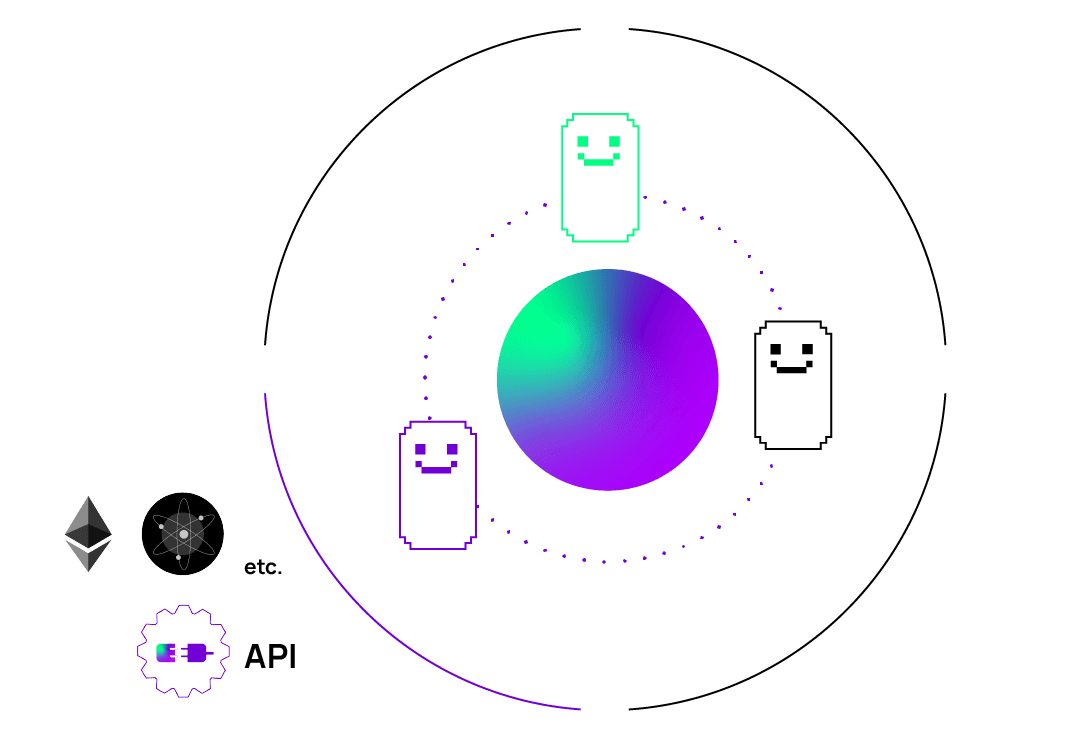Autonomous Services: How they Work

- Autonomous services on Autonolas are made of software agents. Agents are a bit like bots but unlike bots, they are social and can work together. With autonomous services, agents work together to deliver a service. There can be just a few agents in a service or many. Agents are open-source software.
 2. A different individual or company runs each agent. This makes autonomous services decentralized – no single agent can control the service. It also makes them robust, and capable of managing large amounts of capital. If one agent goes down, the rest can continue.
2. A different individual or company runs each agent. This makes autonomous services decentralized – no single agent can control the service. It also makes them robust, and capable of managing large amounts of capital. If one agent goes down, the rest can continue.
 3. Autonomous services run continuously. Agents can keep a service running indefinitely. This means services can spring into action when something happens off the blockchain. This is something smart contracts cannot do.
3. Autonomous services run continuously. Agents can keep a service running indefinitely. This means services can spring into action when something happens off the blockchain. This is something smart contracts cannot do.
 4. Services pull in data from any source a developer chooses. For example
4. Services pull in data from any source a developer chooses. For example
- an AWS storage bucket
- a crypto-native data source like IPFS, Ceramic or The Graph,
- or any other API.
 5. Autonomous services can do sophisticated computation, even machine learning.
5. Autonomous services can do sophisticated computation, even machine learning.
 6. Services are reliable because agents must agree on what the service should do. A small number of agents cannot make the service do something bad. This is called consensus. A software library called Tendermint facilitates this consensus. Tendermint powers Cosmos, one of the biggest blockchain ecosystems.
6. Services are reliable because agents must agree on what the service should do. A small number of agents cannot make the service do something bad. This is called consensus. A software library called Tendermint facilitates this consensus. Tendermint powers Cosmos, one of the biggest blockchain ecosystems.
 7. Once the agents have come to consensus about what the service should do, they can take action. This action could be submitting a transaction on Ethereum, Avalanche, a Cosmos chain, Solana, etc. Services can also take action on a traditional API. This means that services are not limited to acting in the world of Web3. Autonomous services can be a bridge between the traditional tech world and crypto.
7. Once the agents have come to consensus about what the service should do, they can take action. This action could be submitting a transaction on Ethereum, Avalanche, a Cosmos chain, Solana, etc. Services can also take action on a traditional API. This means that services are not limited to acting in the world of Web3. Autonomous services can be a bridge between the traditional tech world and crypto.